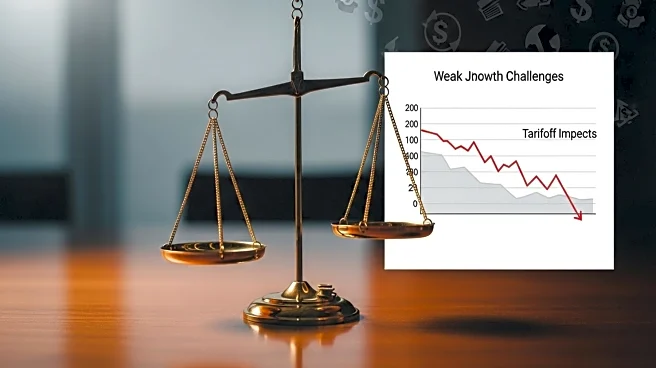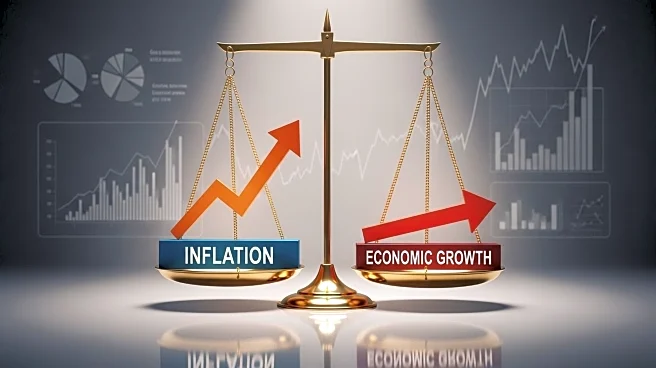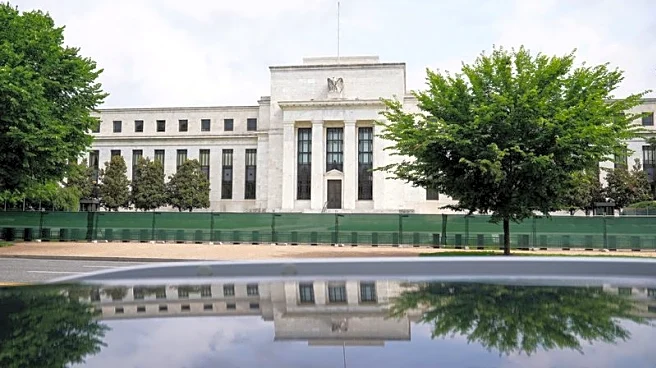What's Happening?
The Bureau of Labor Statistics (BLS) has announced a significant revision in job growth figures for the 12 months ending in March, indicating a reduction of 911,000 jobs, or 0.6%. This revision comes amid a broader economic context where U.S. hiring fell in August, and unemployment rose to 4.3%. The University of Michigan reported a decline in consumer sentiment for September, driven by concerns over job security and inflation. The report highlights that consumers are increasingly worried about tariffs and their impact on prices, with long-run inflation expectations rising to 3.9%. The Federal Reserve is expected to respond to these economic signals by potentially adjusting interest rates.
Why It's Important?
The revision in job growth figures and the decline in consumer confidence have significant implications for the U.S. economy. Rising unemployment and inflationary pressures could lead to reduced consumer spending, which is a critical driver of economic growth. The Federal Reserve's potential interest rate adjustments aim to balance inflation control with job market stability. However, persistent inflation and a cooling job market could complicate these efforts, affecting businesses and consumers alike. The situation underscores the challenges faced by policymakers in maintaining economic stability amid fluctuating economic indicators.
What's Next?
The Federal Reserve is anticipated to adjust the federal funds rate in response to the economic outlook, with a potential rate cut expected at their upcoming meeting. This decision will be closely watched by economic stakeholders, as it could influence borrowing costs and economic activity. Additionally, the ongoing impact of tariffs on consumer prices and business operations will continue to be a focal point for policymakers and industry leaders. The labor market's trajectory and inflation trends will remain critical factors in shaping future economic policies.











